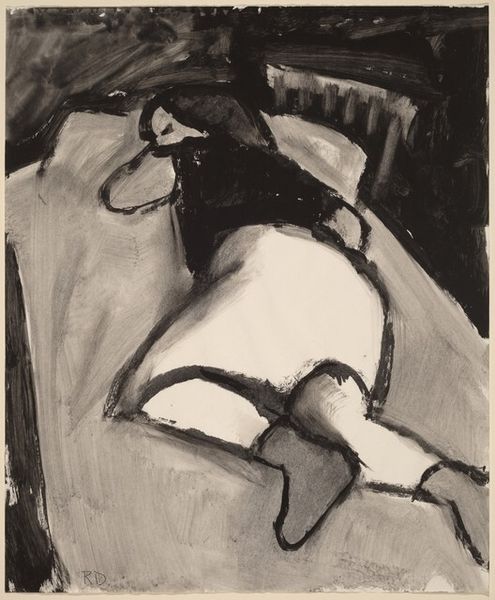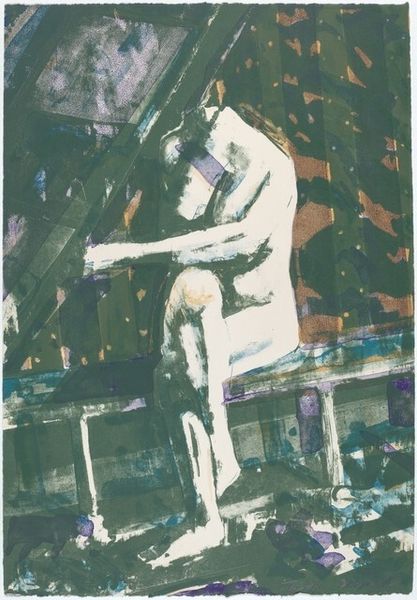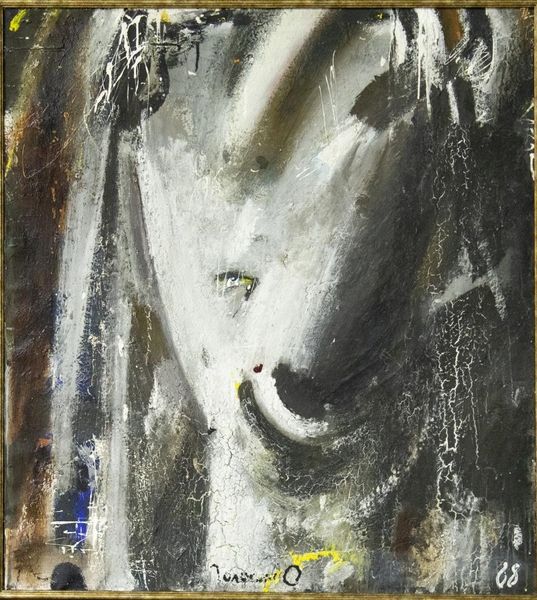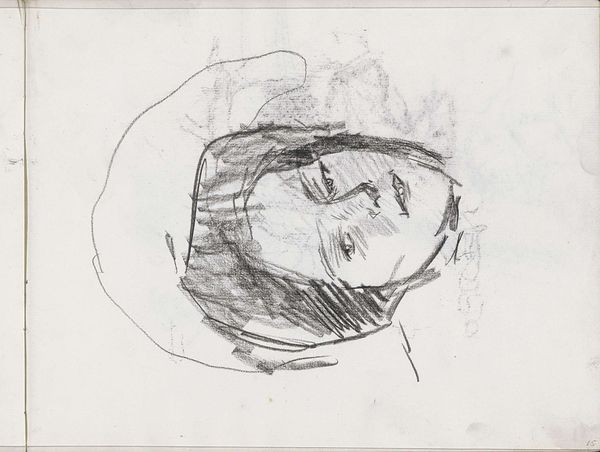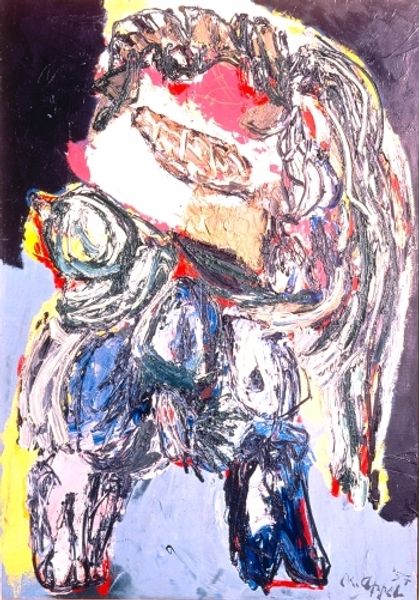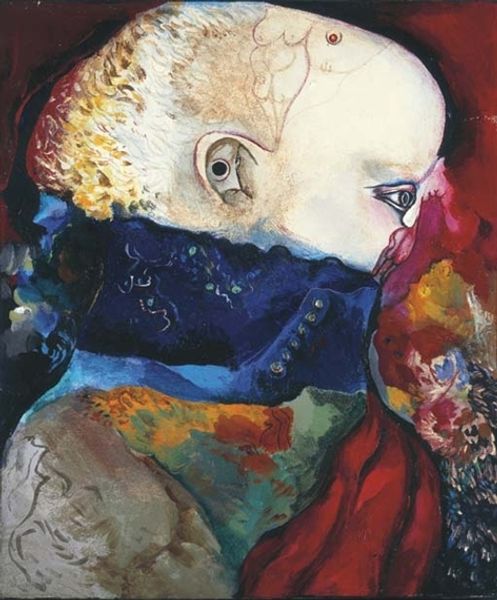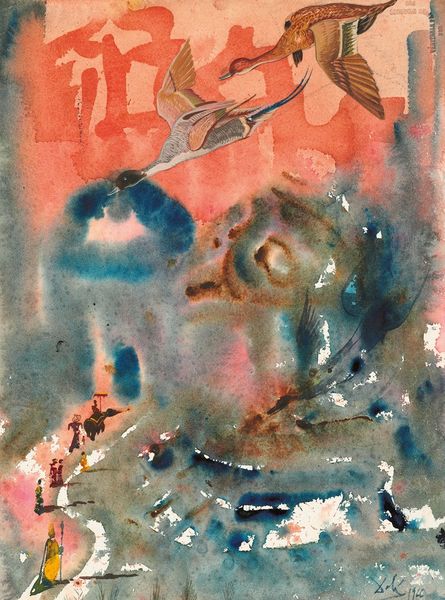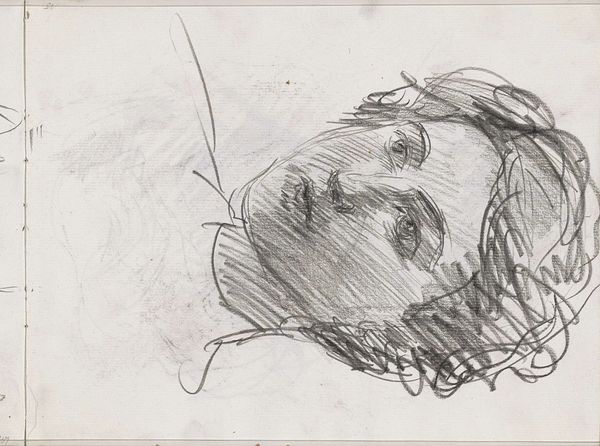
#
abstract painting
#
possibly oil pastel
#
handmade artwork painting
#
oil painting
#
fluid art
#
acrylic on canvas
#
spray can art
#
painting painterly
#
portrait art
#
watercolor
Copyright: Oleg Holosiy,Fair Use
Curator: At first glance, I sense a kind of quiet introspection. The colors are muted, yet there's this raw, almost visceral quality in the brushstrokes. Editor: That’s interesting. I’m looking at Oleg Holosiy's "Self Portrait," created in 1988. It feels very immediate, like the artist has captured a fleeting moment of self-reflection during a pivotal time of political and social upheaval in the Soviet Union. Holosiy, part of the Ukrainian New Wave, often critiqued power structures through his art. Curator: I see it, now that you mention it. There’s definitely a vulnerability in the figure’s expression but the bold colors seem defiant. The stark contrast in the values, particularly on the subject’s face, creates a fascinating duality of presence and absence, a struggle to find identity perhaps? Editor: Holosiy's self-portraits are particularly intriguing because he often incorporates symbolic elements referencing both historical and contemporary anxieties. Consider how light and shadow interplay—this is the archetype of awakening. The sharp edges of the blocks and the limited visibility represent struggle and hardship during those years of oppression. Curator: Absolutely, the visible brushstrokes give a sense of immediacy and vulnerability, challenging idealized portraiture traditions. Editor: I agree. You know, his bold use of color is interesting because it directly contradicts the established norms within Socialist Realism and the traditional academic portraits that valorized particular views, creating a tension between subjective experiences and externally imposed controls. Curator: Thinking about the political climate adds such weight. I wonder if that contrast represents that inner rebellion during a very dark time. Editor: Holosiy himself tragically passed away at a very young age. Understanding his life context through the political lens makes appreciating his art even more impactful and moving. Curator: The visible brushstrokes capture more than just likeness; they convey the urgency of feeling seen and acknowledged at a pivotal crossroads. Editor: His “Self Portrait” really shows how he wrestled with personal and public identity during that particular moment of political unrest and searching for greater freedoms in his native country.
Comments
No comments
Be the first to comment and join the conversation on the ultimate creative platform.
